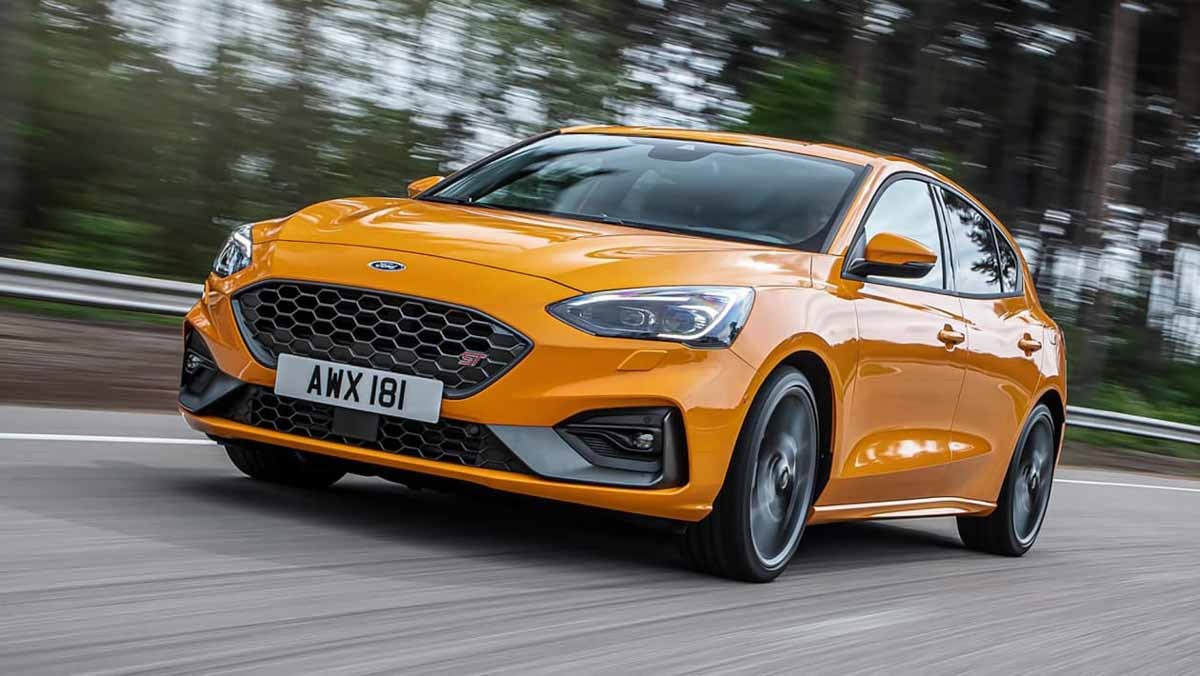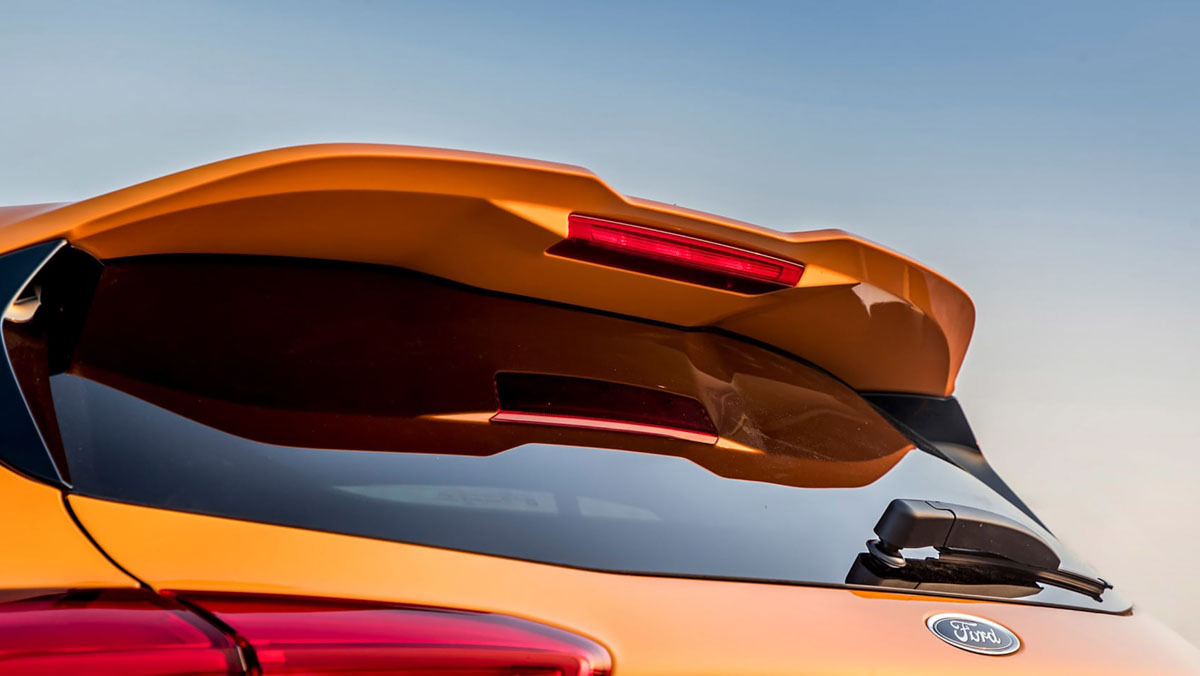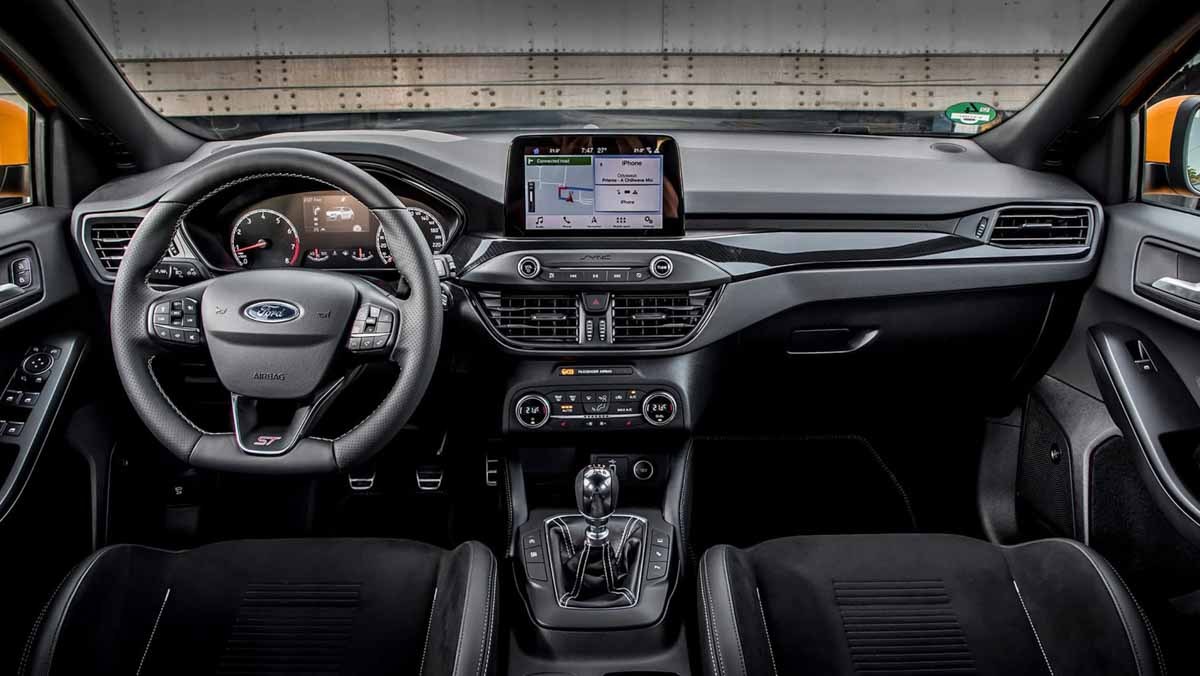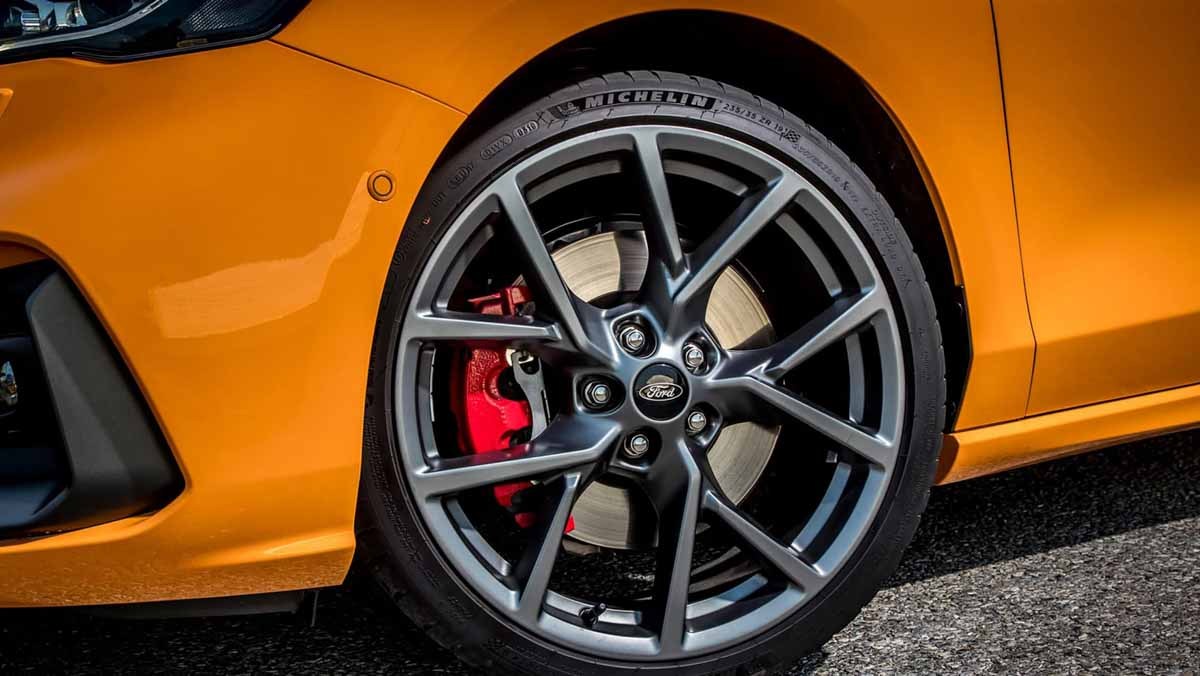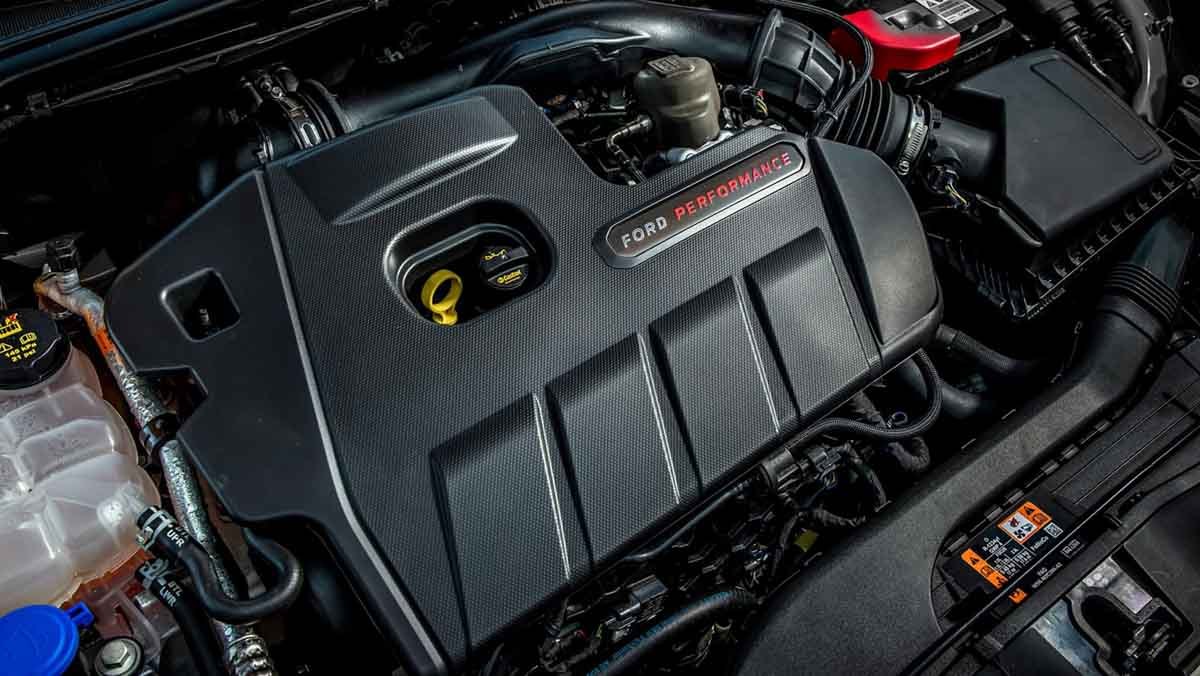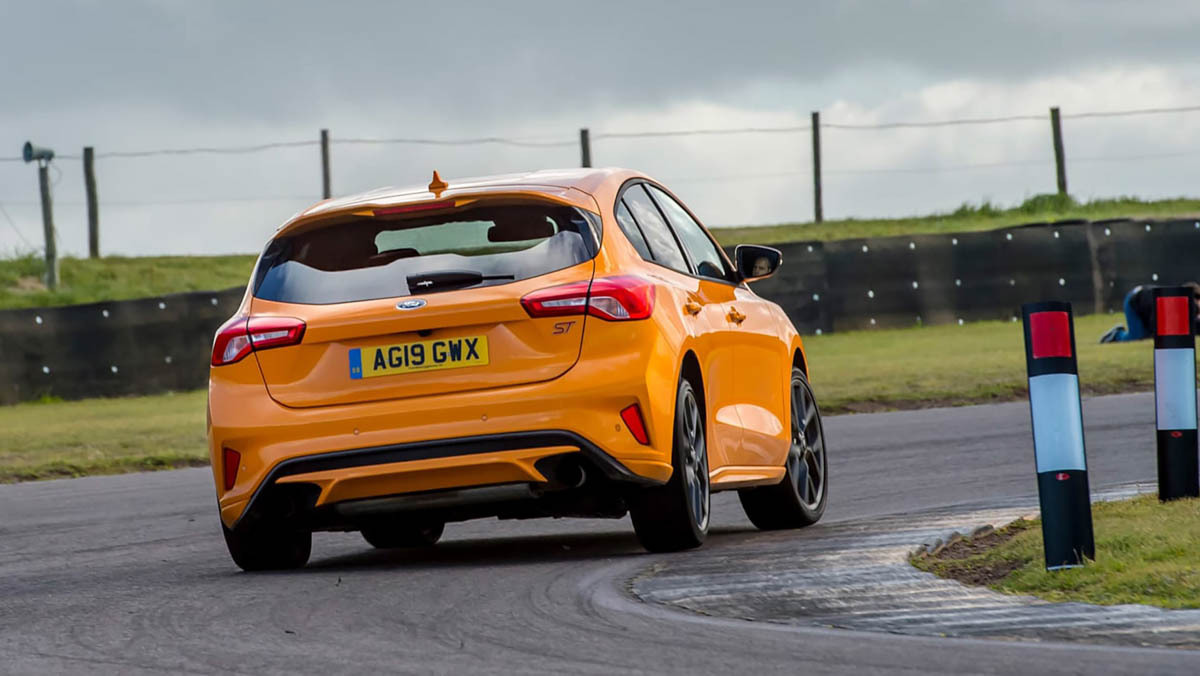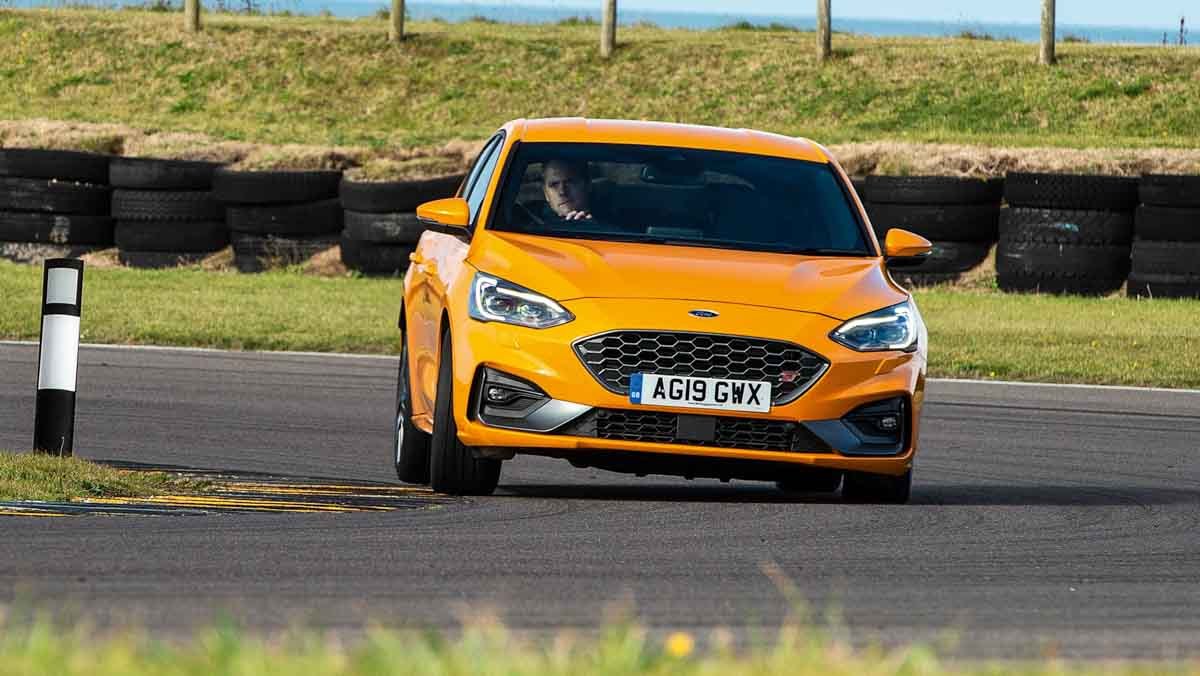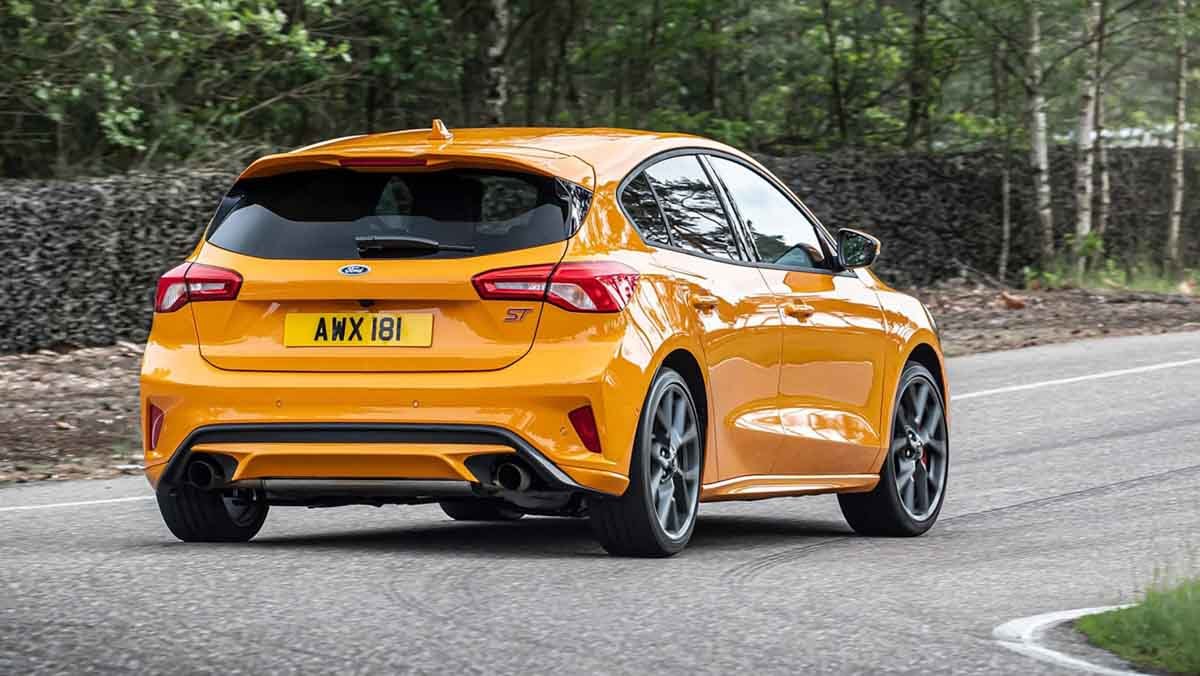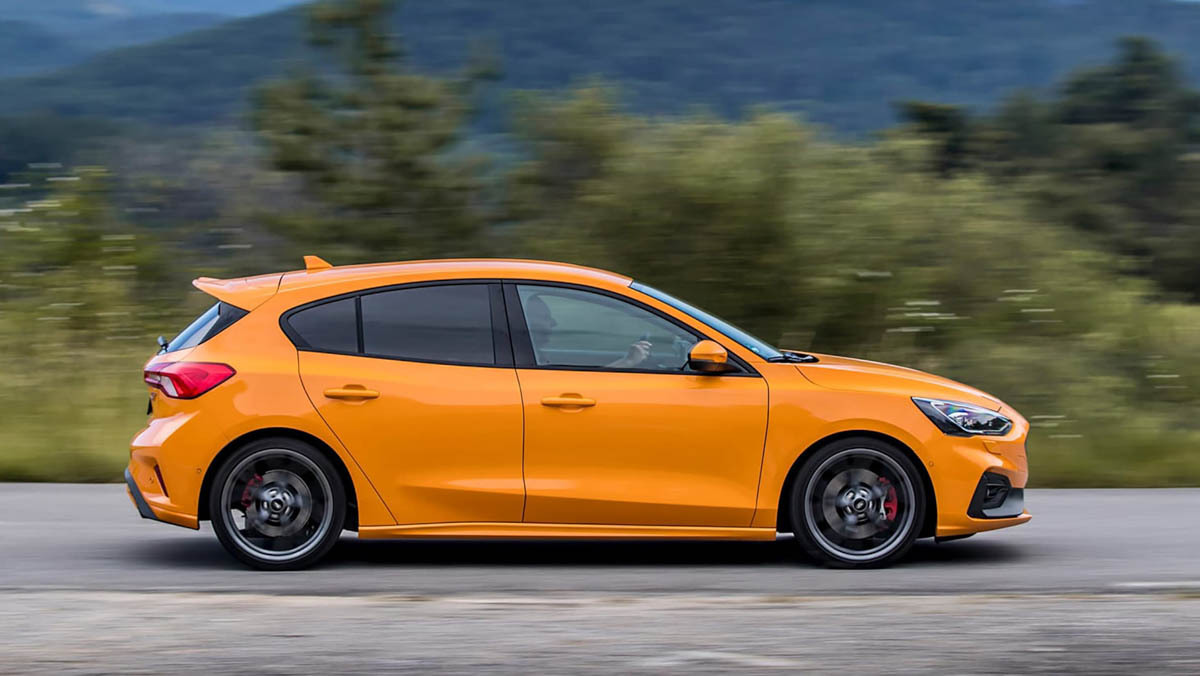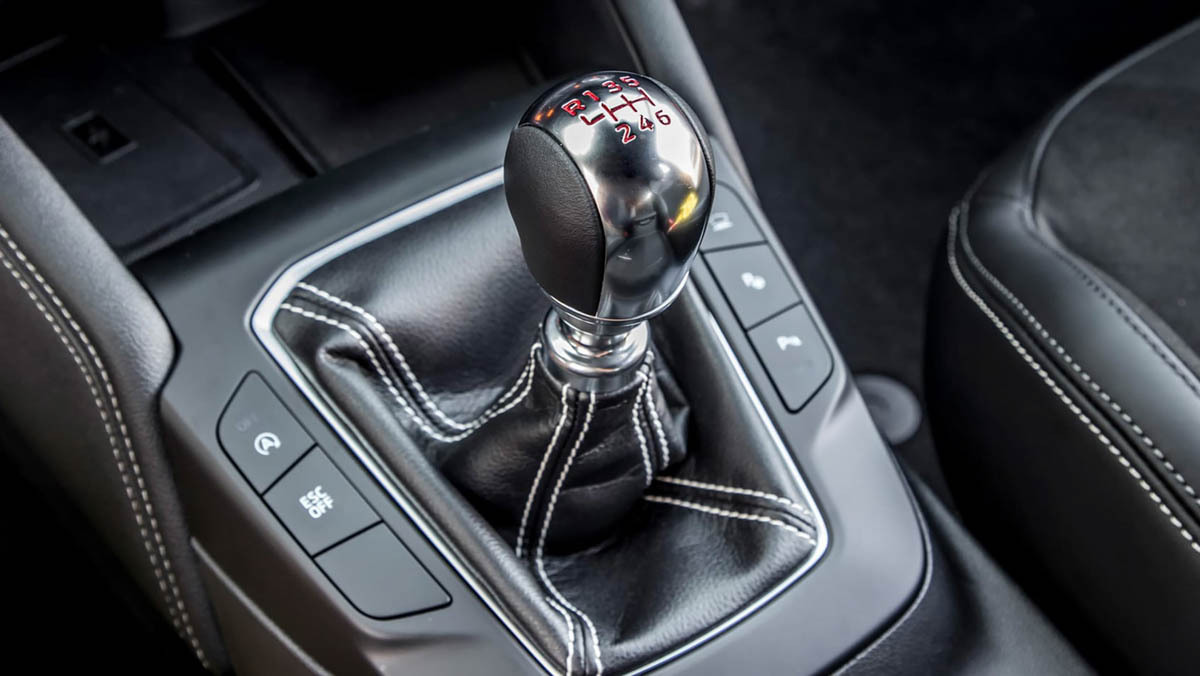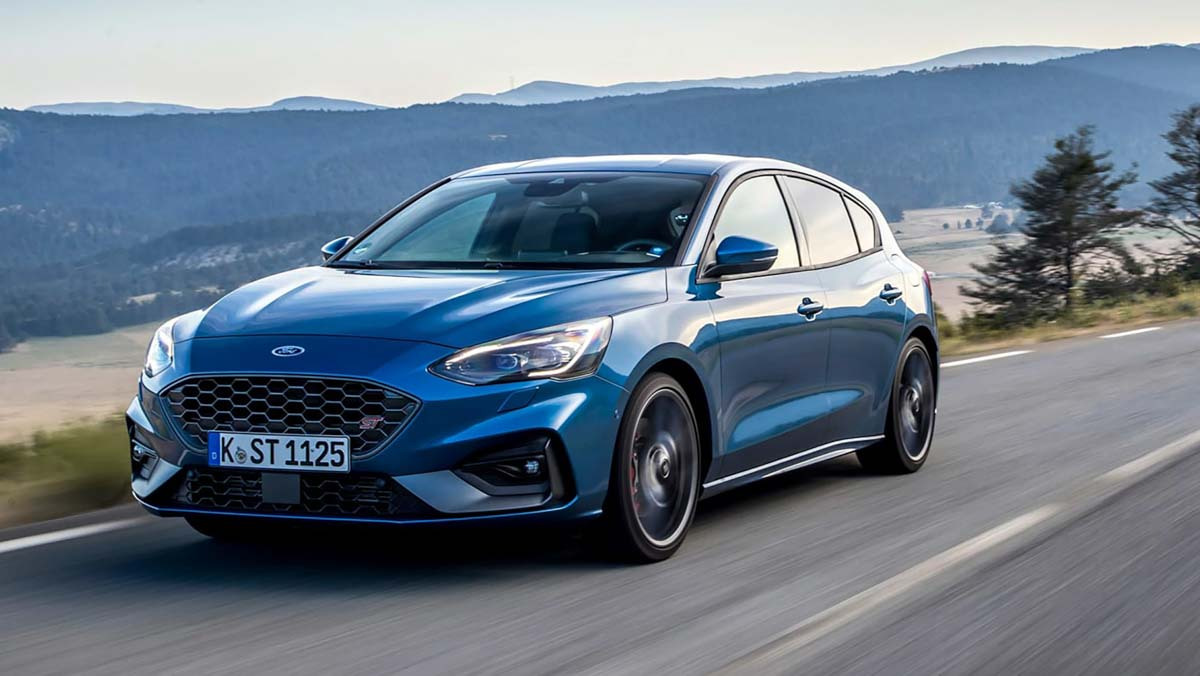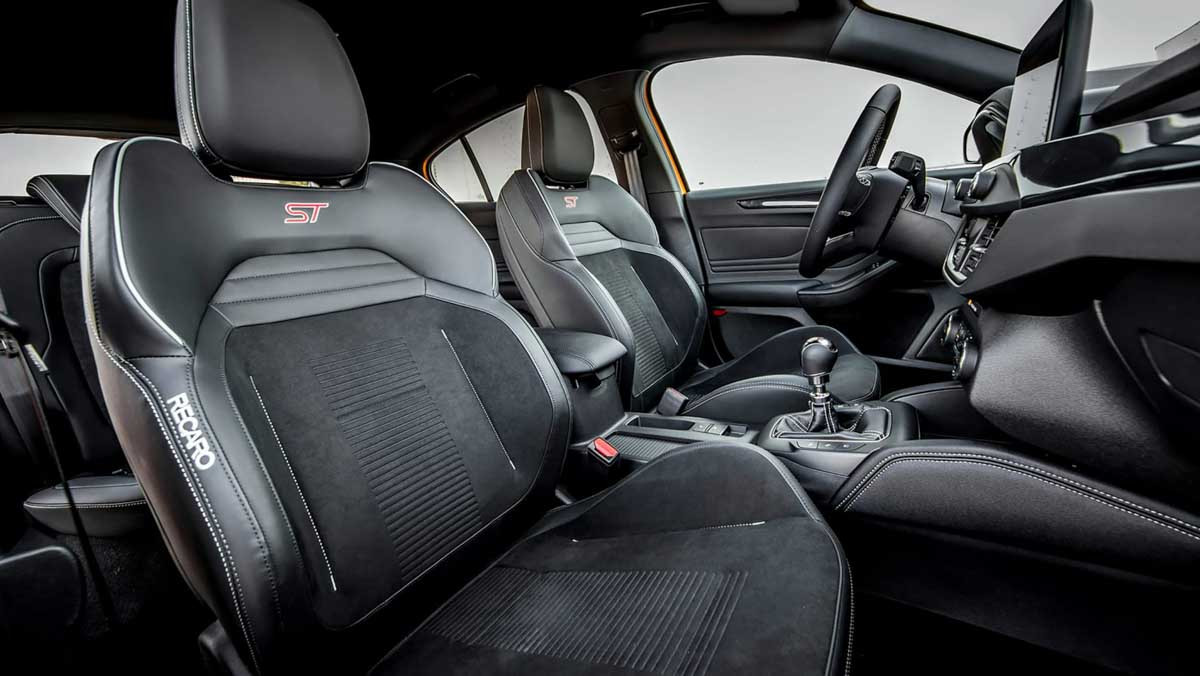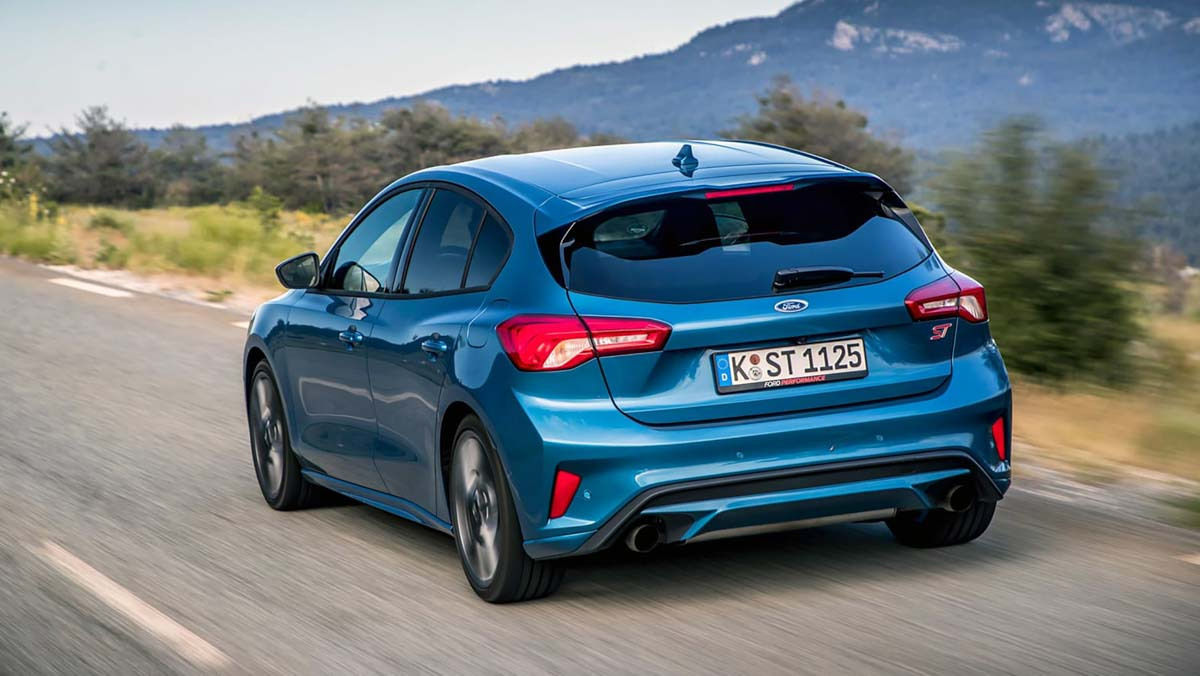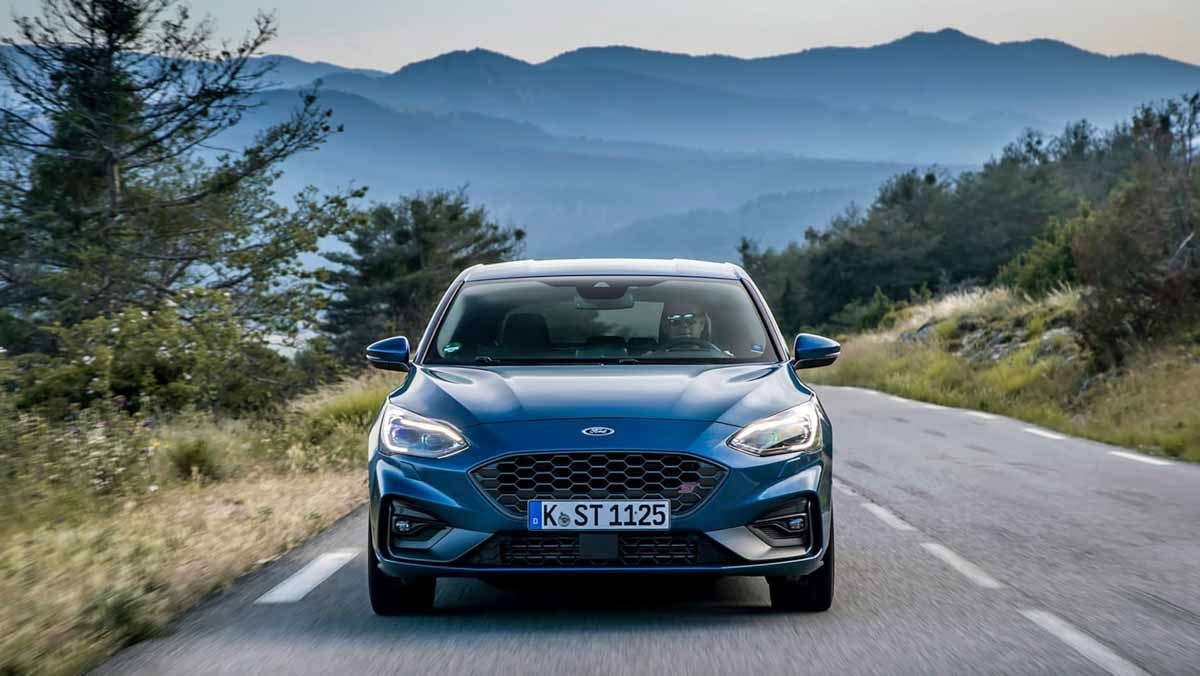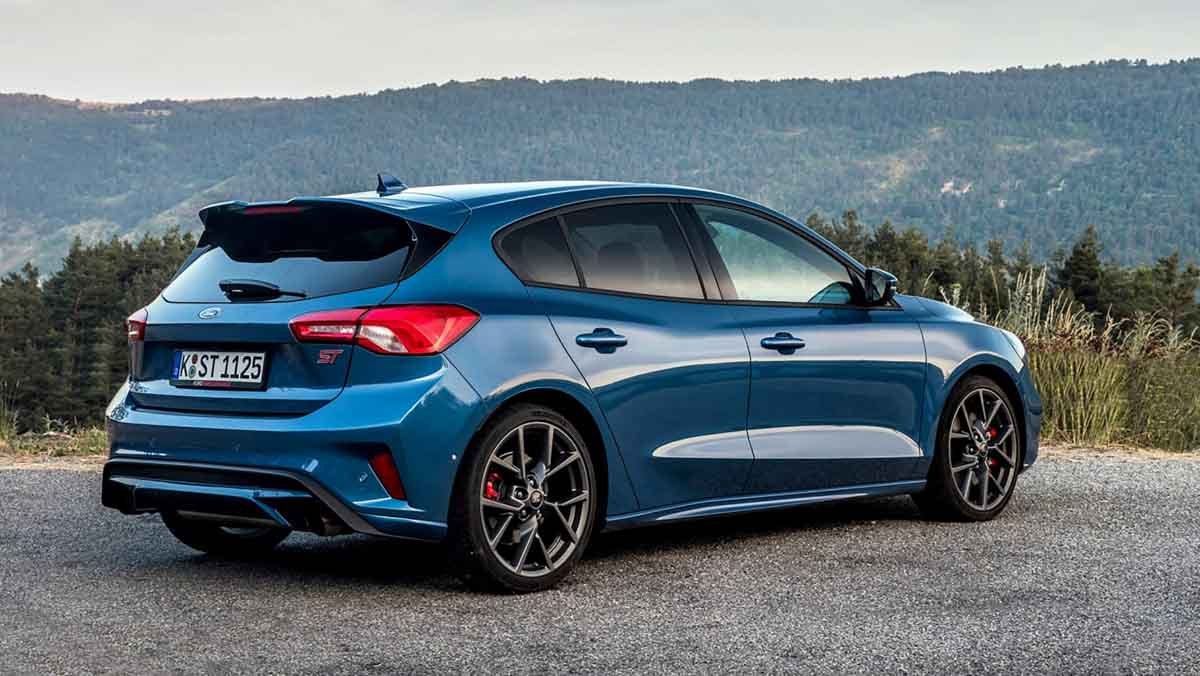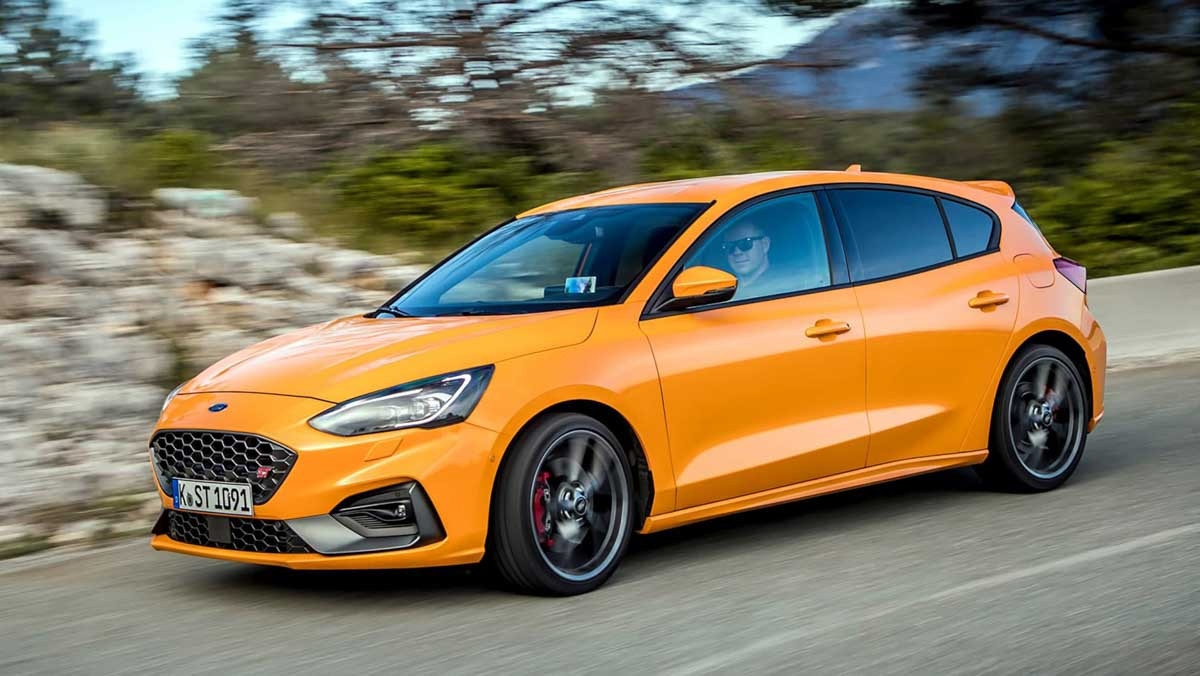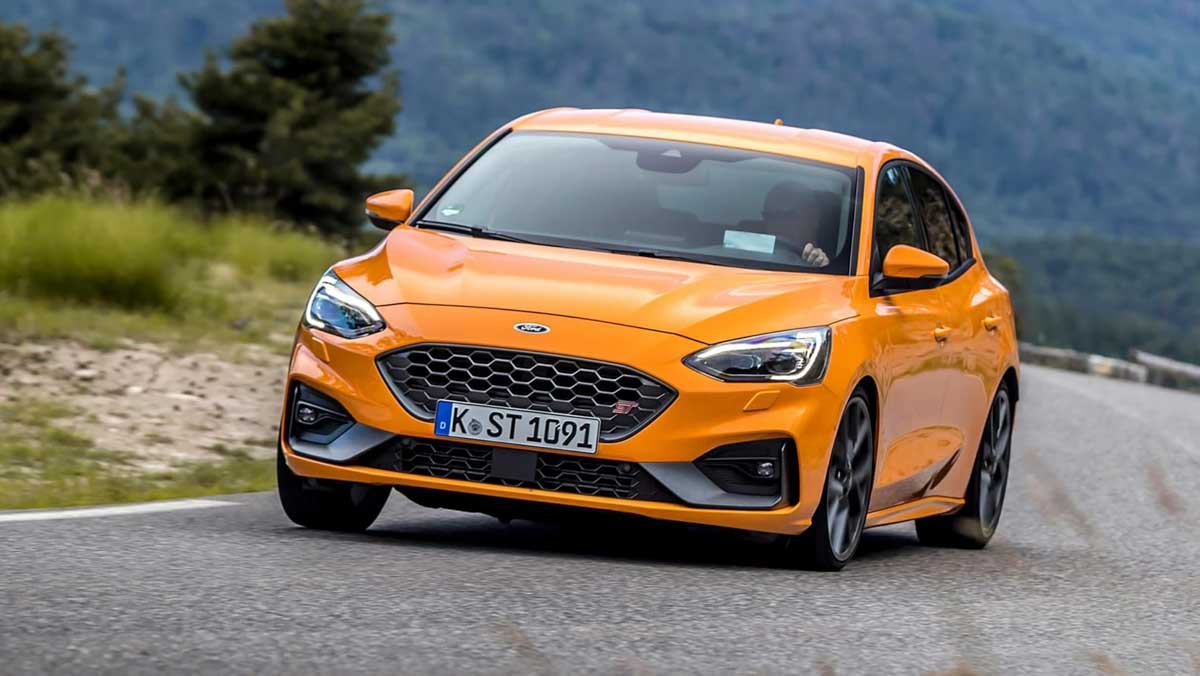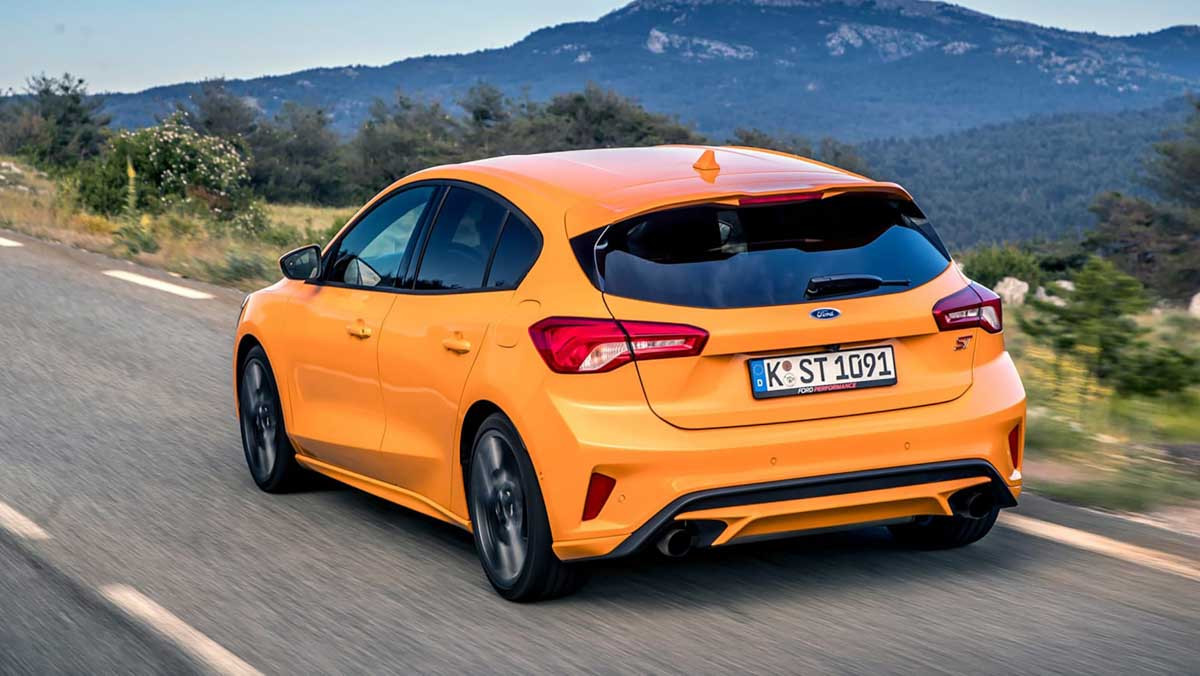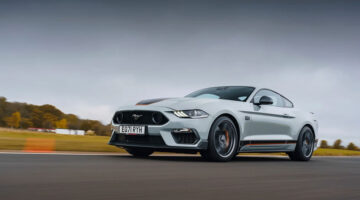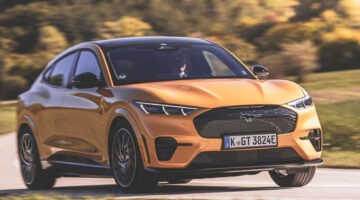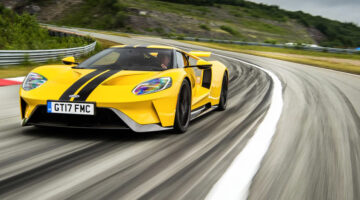Not quite a class leader, and surprisingly expensive, but the latest Focus ST can be great fun on the right roads
| Strong performance, agile, entertaining chassis | |
| Expensive, unnatural steering response |
The Ford Focus ST story has its peaks and troughs. The first-generation car was based on the excellent Mk1 Ford Focus, but its naturally aspirated power plant perhaps didn’t exploit such a sparkling chassis. The next Focus ST had character in spades thanks to a 2.5-litre turbocharged in-line five, but was a softer, heavier car than many rivals.
The third Focus ST didn’t quite hit the spot for us though. Its engine lacked the character of the five-pot and its chassis was corrupted by an unruly front axle. Fun in small doses, but frustrating when the class standard was so high.
So it falls to the fourth-generation car to rectify things, and our early impressions suggest Ford might finally have got there. Sure, it’s not as attractive as the first-gen car, nor does it sound as good as the second ST, but it’s measurably better than the third Focus ST and now stands comparison with cars such as the Hyundai i30 N, Renault Sport Mégane and Mk8 Golf GTI, something the old model struggled to do.
The latest Focus ST remains an imperfect car, lacking the attitude of some rivals and the impressive B-road flow of others, but with an entertaining chassis and punchy (yet controllable) power delivery, it’s become a much easier car to recommend.
Prices, specs and rivals
If you’re expecting a temptingly low entry point like the last Focus ST offered (under $32,000 at launch), then you might be in for a bit of a shock, as the latest ST is at minimum a $41,583 car in petrol guise. Prices have gone up with size and power in this class, naturally, but that’s quite a step for a car that is still a notch back from the best in terms of driving experience. The newly updated Honda Civic Type R, to pick our favourite hot hatch as an example, starts at $45,116, while the new Mk8 Volkswagen Golf GTI is $45,995.
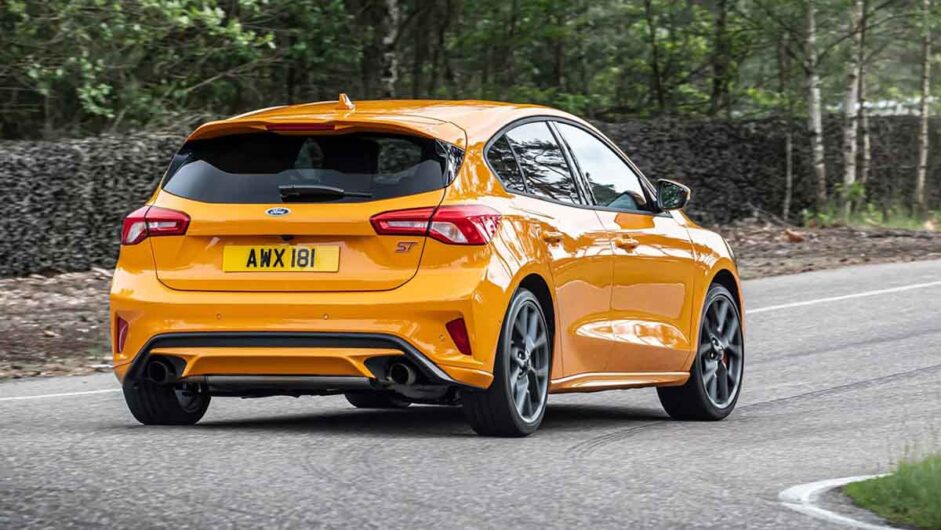
You do get plenty of kit for your money (various electronic safety systems, adaptive LED headlights, Recaro seats, torque vectoring), but consider too that a few desirable additions are behind various different option packs – $350 for the Performance Pack with launch control, rev matching and track mode, or $550 for a head-up display for example.
And while we like the Focus, the rivals already mentioned all beat it for driving appeal. The Civic matches engagement with astonishing ability, the basic Mégane makes light work of a country road with agility and pliancy, and an i30 N pairs a rowdy drivetrain with excellent control.
We should probably mention the enemy within too, which also beat the Focus ST on an evo group test: Ford’s own Fiesta ST Performance Edition, while expensive itself at $36,421, is the best hot hatch Ford makes if you don’t need the space of the Focus.
Engine, gearbox and technical specs
By class standards there’s a fairly big lump sitting under the ST’s bonnet, in the form of a 2.3-litre, or 2261cc if you prefer, four-cylinder turbocharged engine. That’s not quite the 2.5 litres of the old five-cylinder in the second-generation Focus ST, but with most manufacturers now using 2-litre engines and a handful on 1.6 and 1.8s, it’s bigger than many.
At the same time, the car’s outputs shouldn’t be too taxing for the 2.3, with 276bhp at 5500rpm actually less than most of the 2-litre hatches. The ST’s 310lb ft of torque is healthier though; that’s 15lb ft more than that of a Civic Type R, and identical to the all-new, Mk8 Golf R – all evidence of the benefits of that larger engine.
There’s also a diesel ST, making 187bhp at 3500rpm and 295lb ft at 2000rpm from a 2-litre, four-cylinder turbocharged unit.
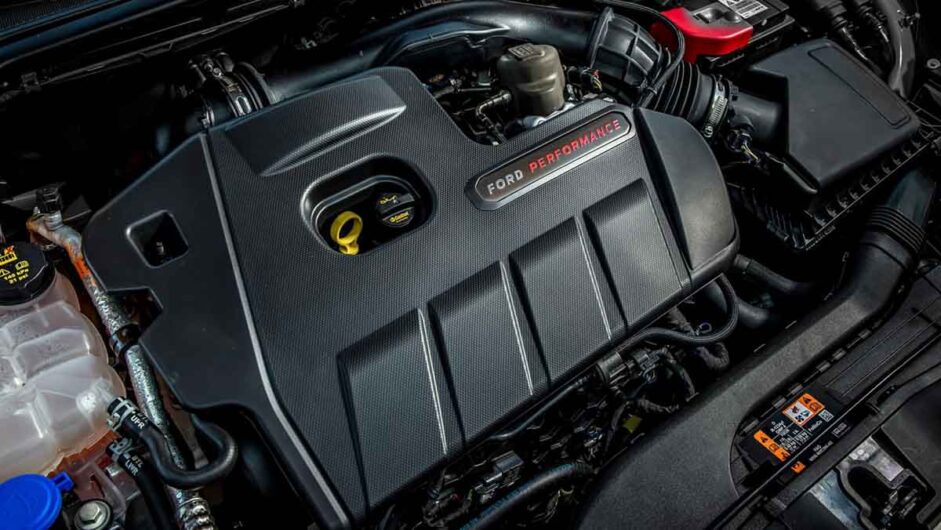
A six-speed manual transmission is standard fit (with a seven-speed auto optional), and power is sent to the front wheels alone, though there’s no limited-slip differential. Instead, you get something Ford calls Torque Vectoring Control, effectively a brake-based system to mimic the effects of a limited-slip diff.
The ST does teem with other tech though. There are the usual selectable driving modes – Slippery, Normal, Sport – and if you’ve opted for the Performance Pack with launch control, Track. The ST’s dampers are electronically controlled, and again feature extra adjustment with the Performance Pack, while the pack also adds rev-matching – though this can be turned off according to driver preference.
The ST is available in two bodystyles – a five-door hatchback and five-door estate – with the former weighing in at 1433kg and the latter 1468kg, each for the petrol model, and 1473kg and 1510kg respectively for the diesel. Wheels are 18 inches in diameter as standard, with 19s optional, and Michelin Pilot Sport 4 S tyres are standard fitment.
Performance and 0-100 time
With a useful shot of power and torque from the 2.3-litre unit the ST is capable of expectedly strong performance. Get a clean launch – something made easier with the optional Performance Pack, which adds launch control – and the ST will scrabble to 100kph in 5.7sec, eight-tenths quicker than the old ST and smack bang in the ballpark for the current generation of hot hatches.
Actually, ‘scrabble’ is probably unfair, as traction is much better this time around so whether on a straight road or powering out of a corner, getting the power down is an easier job – something presumably aided by standard ‘Enhanced Torque Vectoring’. Top speed is quoted as 250kph.
> Limited-run Ford Fiesta ST Edition revealed – hot hatch receives performance and styling tweaks
The diesel model, making considerably less power than the petrol, isn’t quite as brisk. It’s not bad though, with a 7.6sec 0-100kph time and 220kph top speed, though emphasis here is probably more on its 4.8L/100km combined economy (7.9L/100km for the petrol) rather than outright performance.
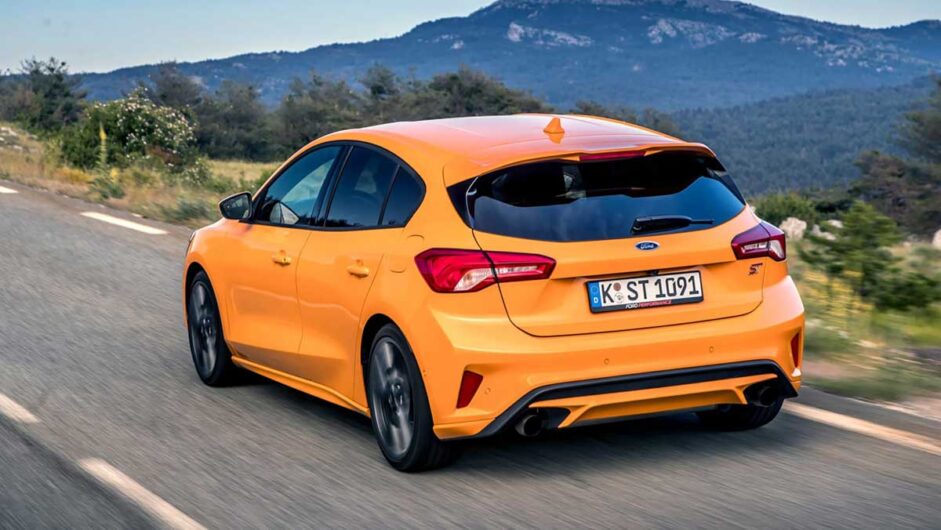
Ever since the second-generation Focus ST with its 2.5-litre straight-five, Ford has attempted to give its hot hatchbacks a distinctive engine note. That’s present and correct here in the petrol, with a snarl that’s clearly more induction than exhaust and sounds reasonably genuine.
In Sport mode you get more of it sooner, and the same goes for throttle response, but the unruly hit of power of the old car has been smoothed out with the new engine. It pulls hard from low down, but in a fairly linear way all the way to the red line. You need around 2000rpm on the clock before it starts pulling hard, and even above that it’s not completely lag-free, but considering outright power is down on several key rivals, the ST lacks little in terms of straight-line pace.
It’ll shed speed easily enough on the way back down too, with strong brakes and decent pedal feel. We’ve not yet spent enough time on track to see how the brakes stand up to prolonged heavy use, but that opportunity should arrive soon enough.
Ride and handling
Within the confines of the Lommel proving ground we were able to get to the ST’s limit of grip and experience its strong, outright dynamic character: lots of grip and no understeer, no matter how hard you pushed. One of the key dynamicists on the ST project, David Put, asked why you’d build in understeer and let the car run wide, potentially across the white line, when you can have a very agile car with a mobile rear and contain it with stability control?
So the ST feels very agile, very eager, right up to and over the limit. Pick up the throttle ahead of the apex and there’s almost instant torque flowing through the front tyres, hauling the car hard through the turn, the eLSD subtly managing torque distribution. Alternatively, back out of the throttle before the apex and the tail comes round, gently and progressively, making it a tool to be used on demand. The feistier the drive mode, the stronger the characteristics, with Track mode disarming stability control, hence its name.
Public roads are another thing entirely and present a different challenge. You get the odd clear-sighted corner where you can commit the car, but generally you’re driving with a lot in reserve. To get into a rhythm and have fun you crave more subtle attributes such as calmly precise steering, a throttle that’s sharp but not abrupt, easily modulated brakes, an unflustered ride, good chassis balance and great traction. Happily, the Focus ST has all of these.
Two turns between lock stops sounds lively, but the Focus is such a well-balanced, well-rounded dynamic package that it all melds into a keen but unnervy experience. On the demanding roads behind Nice, the Focus feels quite at home, its superb engine quick to respond and strong on low-and mid-range torque, its chassis grippy and poised and its steering direct. Only a couple of times during the day do I steer keenly into a turn with lots of momentum and induce some of that rear mobility so strongly evoked at Lommel, and it felt a bit odd.

We are on great roads, always twisting and a challenge to read, to find the optimum line, but they are also generally well surfaced. At Lommel, on a busy surface, the character change from Normal to Sport mode was a transformation, the car instantly firmer and busier. Here, it’s not nearly as obvious, but Sport does also bring superb, keener throttle response, and firmer steering weight as well as tighter damping. The road surface is so good for quite a few kilometres I am even in Track mode, the damping deliciously taut.
The drive modes – Slippery, Normal, Sport and Track – come as part of the $1000 Performance Pack, which also brings rev matching, upshift lights and launch control, and we reckon it’s a must have, to have access to the full range of damping. On a mountain roads, Sport would literally be a tough choice, which is why the mode option should come with a ‘custom’ setting, as its rivals do, to set individual attributes, because once you’ve tried the Sport throttle, you want it all the time.
The brakes, initially numb on moderate applications, get better during the day, and I really enjoy the speaker-generated engine noise enhancement, especially the classic twin-cam chug under heavy load in Sport and Track. Downsides? The gearshift is merely good, occasionally baulking on demanding downshifts, while the pedal spacing for me is poor for heel-and-toe (the rev matching solves this problem), and the steering, although ever direct and great around the centre and when committed, lacks feel in that vital place in-between, where you can spend a fair bit of time on great roads.
Interior and tech
There’s little to complain about with the ST’s cabin design. The latest Focus interior is a marked step up in quality from its predecessor, and the ST carries this over with the addition of a few suitably sporty touches.
A set of figure-hugging Recaro seats make a return, and as before they seem to be shaped for a racer’s physique – those broader of waistline may feel a little squeezed. The major touchpoints are pretty good too, with good adjustment in wheel and seat. Some may find the flat-bottomed steering wheel rim a little chubby and the gearshift action a little notchy, but Ford has generally got the basics right, including well-spaced pedals.
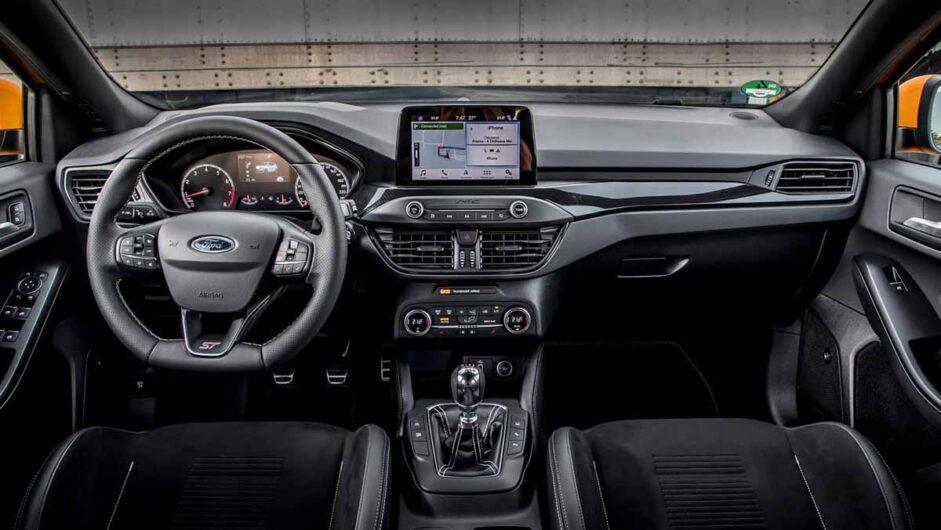
It’s spacious inside too, and the 375-litre boot is much more generous than the mean little cubby of its predecessor – it’s 60 litres larger than before, five litres off the class benchmark Volkswagen Golf’s capacity and nine litres behind the Renault Mégane’s. Quality too has improved, the cabin feeling generally solid.
Ford’s in-car tech still isn’t the best in class though, despite the latest Sync 3 system again improving over that in the old car. The 8-inch touchscreen is easier to use, but still occasionally slow to respond and quickly gets overwhelmed by rapid inputs, such as typing in a postcode in the satnav.
Design
Focus STs have always been a relatively subtle foil to the more extravagant Focus RS. We’ve not yet seen a Mk4 RS, but true to form the latest ST is relatively subtle, even in some of the brighter shades to grace the options list.
This is either a good or bad thing depending on how you view the ST in the first place. From some angles its pronounced arches and sucked-in waistline is fairly appealing, but the creature-of-the-deep face and slightly sagging rear are less successful. Ford has jazzed it up a little with a subtle bodykit – new front bumper, side skirts, half-hearted diffuser, a tailgate spoiler, and a set of new wheels – but in darker colours it’d take a keen eye to pick it out in a supermarket car park.
Compared to the purposeful Hyundai i30 N, classy Volkswagen Golf GTI and brilliantly brutish Renault Megane RS, the Ford’s underwhelming aesthetic isn’t enough, but then at least it’s not quite the acquired taste of the Honda Civic Type R.
This article originally appeared at evo.co.uk
Copyright © evo UK, Dennis Publishing

